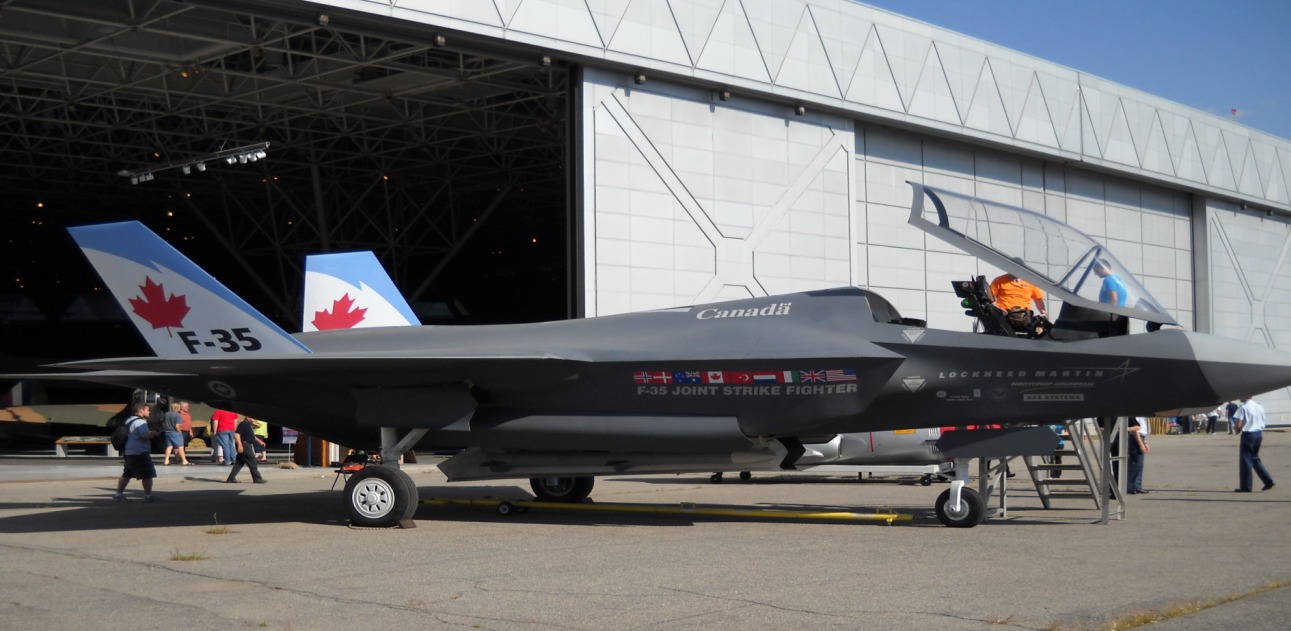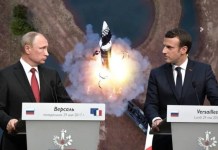One of the first things that the new Canadian Prime Minister, Mark Carney, did after taking office was to put the F-35A Lightning II purchase under review amid rising tensions with the United States.
The review will be published by the end of this summer.
In a recent media interaction, the Canadian Defense Minister, David McGuinty, said the Liberal government will follow the military’s lead on the F-35 decision, according to a local Canadian publication, Ottawa Citizen.
McGuinty reportedly acknowledged that Canadian Forces and Department of National Defence personnel are in charge of the review, which will be published soon.
“When the review is completed, we can take our lead from the experts that performed the review both in the Department of National Defence and the Canadian Armed Forces,” McGuinty told journalists during a tour of Canadian Forces Base Borden, Ontario, on August 11. “Obviously, it would be strange if they didn’t look at the operational needs going forward, and I’m sure they’ll have a lot more to say about that.”
The remarks come days after a Reuters report, citing two informed sources, claimed that Canadian defense officials reviewing the purchase are in favor of buying all 88 F-35A fighter jets. The report, however, clarified that the review does not make a formal recommendation, and the final decision rests with the Mark Carney-led Liberal government.
According to the Ottawa Citizen report, the fact that the country’s officials are favouring the purchase did not come as a surprise, given that the officials had lobbied for the purchase in the first place.
The Canadian military leaders are very close to their US counterparts and have been pushing for more integration and co-operation between the two militaries, the report added. Interestingly, the consensus on completing the purchase comes as the US has imposed 35% tariffs on Canada.
While Prime Minister Carney earlier expressed concern about being over-reliant on the US defense technology, the officials in his government believe that the Canadian military needs to maintain interoperability with the US.
Speaking to reporters on June 10, McGuinty said, “There’s a question of interoperability, there’s a question of interoperability in the United States, there’s a question of interoperability with all of our NATO allies.” “This is not inconsequential in decisions, in timing, in choices.”
Moreover, the country faces a unique challenge: either it stays committed to the deal, which is expected to cost a lot more than anticipated and stay attuned with the US, or it gives up on the deal and billions of dollars of investment already made, while becoming more alienated from the disgruntled Trump administration.
F-35A Purchase Put Under Review
In January 2023, the Canadian government inked a CAD19 billion (US$14.2 billion) deal with Lockheed Martin to acquire 88 F-35 fighter jets in four tranches by 2032. The purchase was meant to replace the aging CF-18s of the Royal Canadian Air Force (RCAF).
However, Prime Minister Mark Carney announced earlier this year that he would review the purchase of the F-35 beyond the 16 that have been paid for and are expected to be delivered next year.
The review came as the US President Donald Trump imposed unprecedented tariffs on Canada, humiliated the Canadian leadership, and called on the country to become the 51st state of the US.
The Canadian government earlier asserted that it needs to “make sure that the contract in its current form is in the best interests of Canadians and the Canadian Armed Forces.”
The tensions between the two countries have cast a shadow on their military alliance amid rising political tensions. Earlier, Canadian officials expressed fear that in the event of a disagreement or a political fallout, the Trump administration could weaponize the control it enjoys over the aircraft by blocking access to spare parts and software upgrades that are required to keep the aircraft flying and combat-ready.

Moreover, Canada has been apprehensive that it will never be able to fully control the highly automated aircraft, particularly as the manufacturer, Lockheed Martin, has consistently refused to give its complete “source code” to foreign clients.
After putting the purchase under review, the Carney government also indicated that it was mulling the option to buy a European jet. Three different 4.5th-gen fighters, including the Rafale, Eurofighter Typhoon, and the Gripen-E/F, have since been in the reckoning. However, no decision could be made unless a final decision on the F-35A purchase is taken.
As ties worsen, Lockheed Martin, the manufacturer of the fifth-generation F-35 Lightning II stealth aircraft, has been trying to save the deal by promising Canada more jobs in the country if it remains committed to buying the 88 F-35s.
Canada’s F-35 Conundrum
In Canada, the F-35 program has a contentious past.
The Liberal government provided funding for the aircraft’s development in the late 1990s, but without committing to the purchase of the stealth fighter.
Later, the Harper administration declared its intention to buy the F-35 during a high-profile press conference in July 2010, during which Conservative Defence Minister Peter Mackay sat in the cockpit of a model aircraft. However, amid rising costs and concerns regarding the technology, the Conservatives backtracked and refused to buy the aircraft.
This sentiment was later echoed by the Liberals. Justin Trudeau swore throughout the 2015 campaign that the Canadian government would never buy an F-35. In 2016, he stated that the people in Canada are fully aware that, for a decade, the Conservative Party failed to provide the necessary equipment to the Canadian people and their armed forces. “They clung to an aircraft (the F-35) that does not work and is far from working.”
However, in an unprecedented U-turn, Trudeau went back on his election pledge in January 2023, agreeing to buy 88 jets instead of the 65 that the Conservatives had initially planned to acquire. Some reports believe that this was because he caved to the pressure from a lobby that favored the F-35 as he navigated an electoral campaign in a fractured polity.
Nevertheless, since the F-35A deal was signed, it has generated discontent in Canada due to the exorbitant cost of the purchase. In the days preceding the signing of the contract, activists around the country protested Canada’s decision to purchase US fighter jets.
Needless to say, a lot of opposition is directed at the cost of the F-35A, the most expensive fighter jet in the world currently. The F-35A variant has a flyaway cost of about US$82.5 million per unit.
Moreover, export prices typically include additional costs, pushing the effective unit cost to around US$100-110 million, sans the weapon package. Additionally, operating costs, subsequent upgrades, and spares increase the life-cycle costs of the F-35s.
A Parliamentary Budget Office (PBO) report published in November 2023 estimated that the cost to Canadian taxpayers of owning and operating a fleet of F-35 fighter jets over the next 45 years would reach a whopping US$73.9 billion. This calculated sum included the aircraft’s life cycle costs, from planning and development to use and disposal, as previously reported by the EurAsian Times.
A more recent report from Auditor General Karen Hogan states that the planned purchase of F-35A fighters by Canada is facing a host of challenges that including skyrocketing costs, a lack of critical infrastructure, and a shortage of trained pilots.
According to the audit report, the estimated cost of the F-35 program has climbed to CAD 27.7 billion, up from the CAD 19 billion projection made by the National Defense in 2023.
This is almost 50% more than initially anticipated and does not include the weapons that the aircraft will be equipped with or the necessary upgrades to vital infrastructure. The audit estimates that at least an additional CAD 5.5 billion would be needed to secure weapons and vital infrastructure, such as operational bases.
The audit report also noted that the US authorities have warned that the Canadian military lacked the facilities necessary to house the F-35 stealth fighter jet, requiring a redesign of the structures and additional expenses for Canadian taxpayers.
Hangars and other facilities being constructed in Canada to store the F-35 aircraft are subject to American approval as part of the deal.
If this were not enough, Canada also lacks experienced pilots who are qualified to fly the F-35. The Royal Canadian Air Force will require more skilled pilots “to make the CF-35A fleet fully operational,” said Hogan’s report, adding that the rising expenses and infrastructural delays present a barrier. Thus, this acquisition is all the more complicated.
The audit also gave Canada an update on when its F-35s will be delivered. Although Canada originally contributed funds for 16 jets, Lockheed Martin stated that it would only be able to provide Canada with 12 jets shortly.
Of these, the Luke Air Force Base in Arizona will receive the first eight of those aircraft between 2026 and 2027. The final 80 aircraft will be shipped straight to Canada beginning in 2028. If Canada fulfills the entire contract, the final plane will arrive in 2032.
For now, all of that depends on whether the Liberal government gives a green light to the full purchase or nips it in the bud.
- Contact the author at sakshi.tiwari9555 (at) gmail.com
- Follow EurAsian Times on Google News




